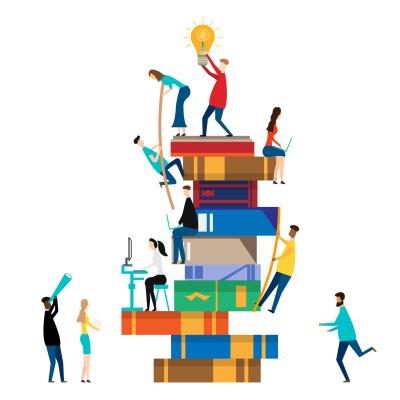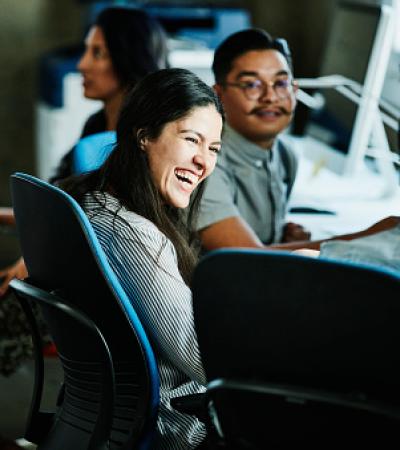Jackie Mills is a partnerships pro; she established library partnerships way before it was a trending topic. “Partnerships and collaboration are the future of libraries,” she says. “If the pandemic has taught librarians anything, it’s that libraries don’t exist within four walls anymore.”

Starting as a school librarian, Mills found ways to partner with teachers first, then moved on to creating public library programming for badge-seeking Girl Scout troops and collaborating with a group home for adults with disabilities for a solar eclipse viewing at the library.
These days, Mills is director of the Mt. Angel Public Library in Oregon, where her partnership skills will be in full force as she works to bring her community in the doors (and online) for the library’s STEAM Equity project.
Although Jackie Mills has a wealth of experience, she didn’t learn these skills overnight; she’s made mistakes and learned from them. We asked Mills to share the most common mistakes people make when beginning community partnerships.
Mistake #1: Assuming that everyone knows library programs are free
It can be a mistake to assume that everyone knows library programs and resources are free, especially if you are trying to reach immigrant communities. Free library services aren't the norm everywhere. Some libraries in South America, for example, have restricted access and paid programming and exhibitions.
Share all your library has to offer by bringing free programming out into the community. Use your already existing connections to set up a quick library program at a church or after-school program. “Show them that these programs, books and resources are totally free for them!” says Mills. “This can take away some of that anxiety and persuade people to come through the doors without any worry of fees.”
It’s also important that all of your marketing materials, online and print, clearly emphasize that there is no cost to participate.
Mistake #2: Thinking translation is enough
Mills had tried to reach the Spanish-speaking community of Mt. Angel for years and never had much success. It wasn’t until she connected with Cristo Cervantes, the Spanish-speaking Assistant Pastor/Asistente Pastoral at St. Mary Catholic Church, that she started to make progress.
“Cristo told me that it’s always important to have a translator, but it’s much more meaningful to have a member of your library team — either staff, partner or volunteer — who speaks their language,” Mills says. “This creates a more authentic interaction and can make it easier for people to get their questions answered about the library."
Even if all your materials are translated, having a personal connection with someone is an important factor in reaching new segments of your community.
Mistake #3: Going right in with a big ask
Let’s say you discover a fantastic potential project for your library that requires a community partnership. There’s a specific person or an organization in the community that you have heard of, but you don’t have an established relationship with them yet.
Don’t get blindsided! Start small and establish relationships before you jump in for a big ask, Mills says. Building partnerships takes time, and if you jump right in with a huge request, potential partners are more likely to say no — or worse, you could find yourself in a large-scale project with a partner who isn’t the right fit.
“The people you are asking to collaborate have the same concerns you do: 'Is this person going to be a reliable partner, or am I going to get stuck?' That’s why it’s so important to start with smaller projects to determine whether you work well together and have the same expectations," Mills says. “Once you have a successful collaboration under your belt, they are more likely to go for a bigger project.”
Mistake #4: Neglecting community influencers
If you’re trying to reach a specific group of people through your partnerships, reach out to people or organizations that have the most influence in that community. For the STEAM Equity grant, Mills knew she needed to get the Spanish-speaking community on board.
“For many communities, including mine, the local church and large employers are big influencers that are widely connected,” Mills says. “Try to get a quick meeting set up with those in charge of the ‘big player’ organizations and see if you can come in to present about your library’s programs and resources.”
Mistake #5: Putting your energy in the wrong places
“Be strategic about where to put your energy in partnerships because one partnership will ultimately lead to others,” says Mills. “It’s important to note that this strategy can be hit and miss. Sometimes you’ll never hear back, and that’s OK!"
Whether a partnership succeeds or not often hinges on whether your meeting is with the right person or your email lands in the right inbox. Finding this key person will help you make other connections. For Mills, that was Cristo Cervantes at the local church.
“Always be ready to strike up conversations with folks in the community about your library,” Mills says. “You never know who you’ll meet who could end up being a partner.”
The STAR Net STEAM Equity Project is offered by the Space Science Institute's National Center for Interactive Learning (NCIL/SSI), the American Library Association (ALA), Twin Cities PBS (TPT), Institute for Learning Innovation (ILI) and Education Development Center (EDC). It is generously funded through the National Science Foundation. This project builds on the STAR Library Network, or STAR Net (where “STAR” stands for Science-Technology Activities and Resources).



